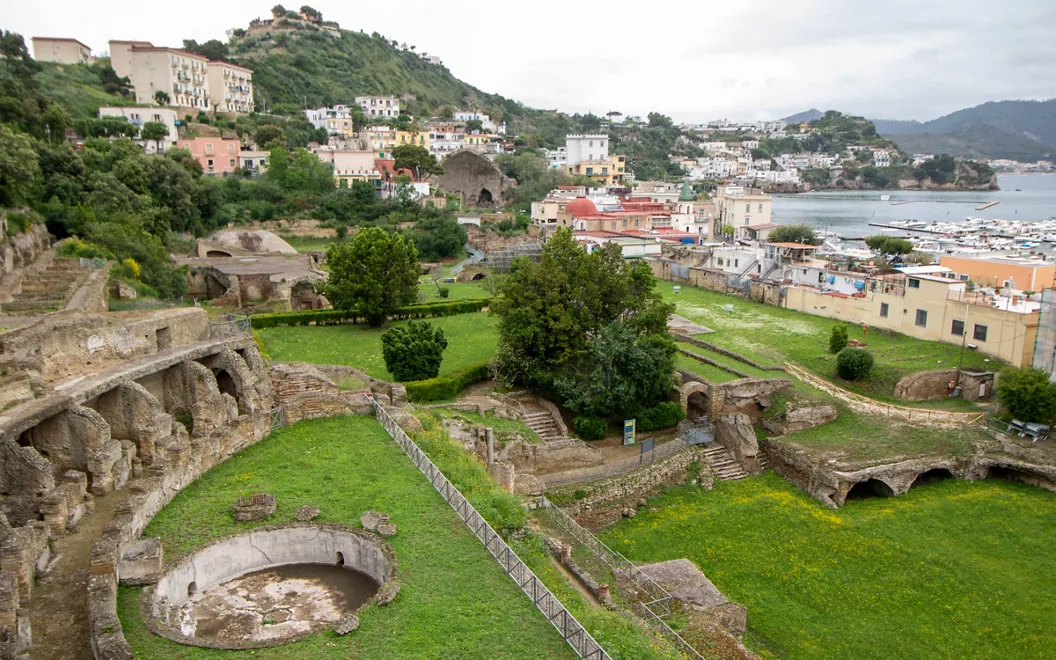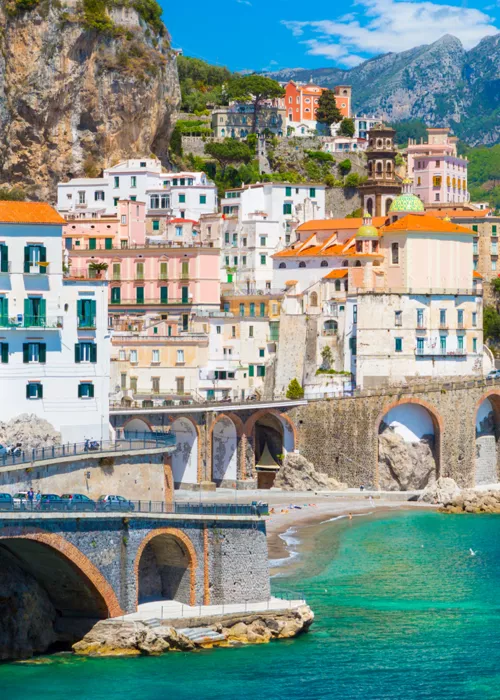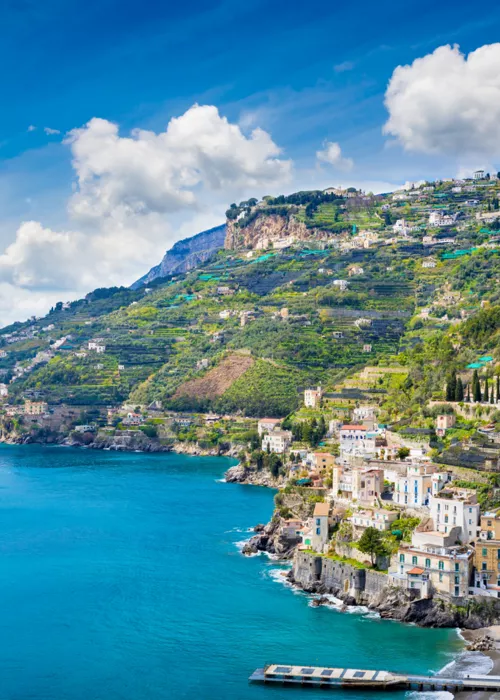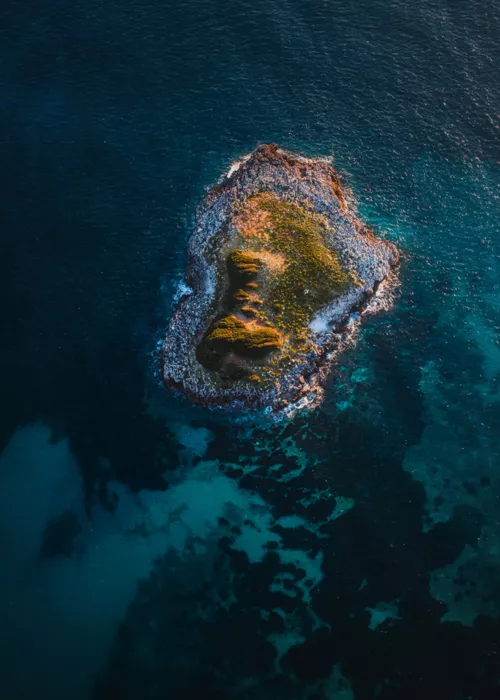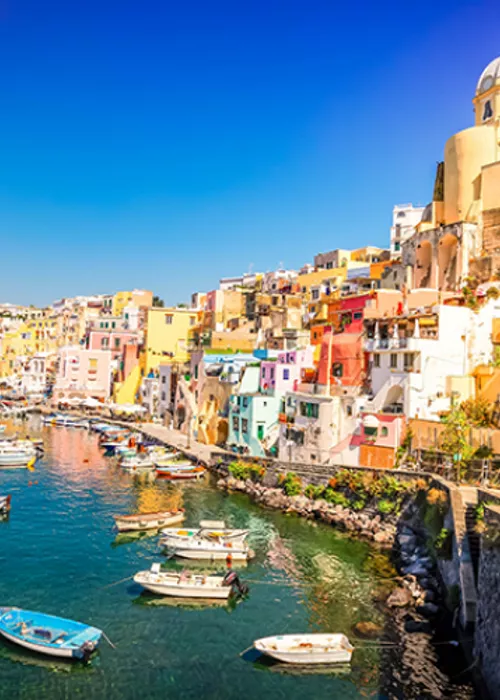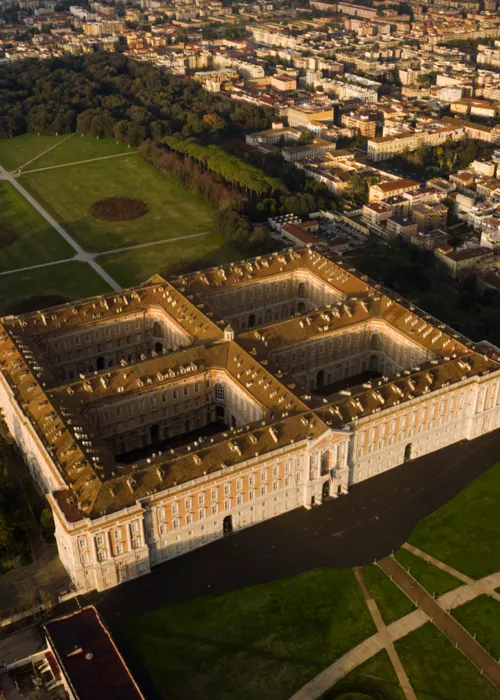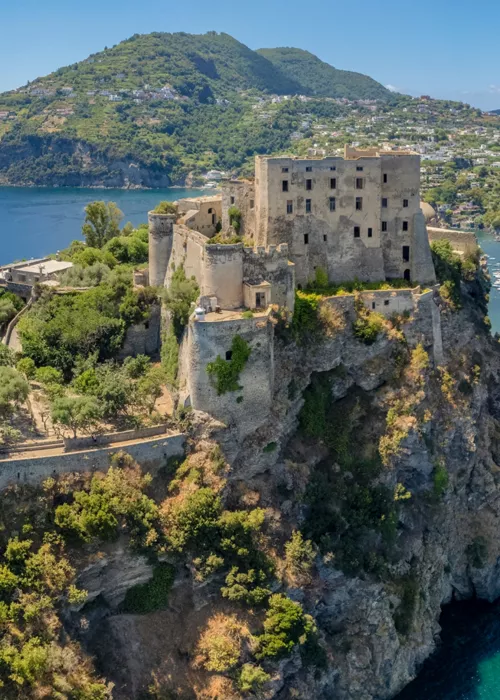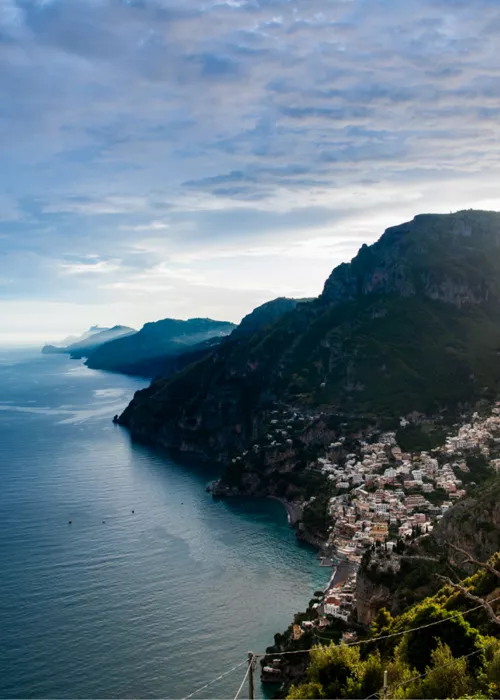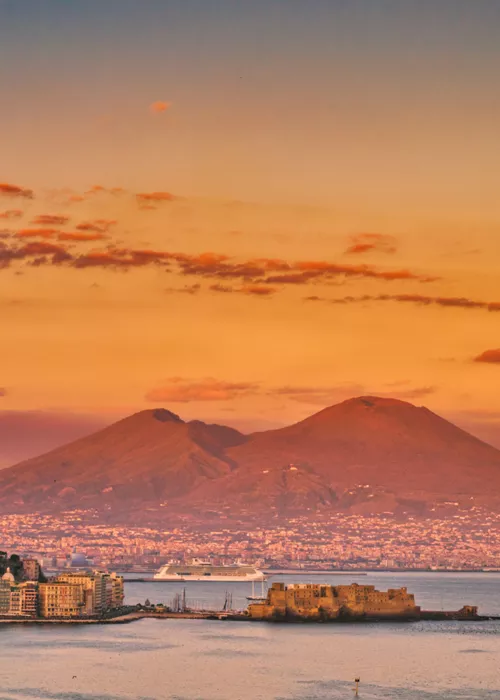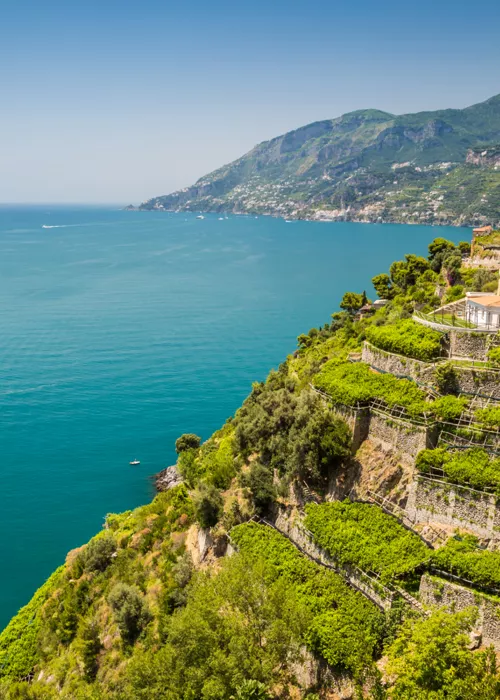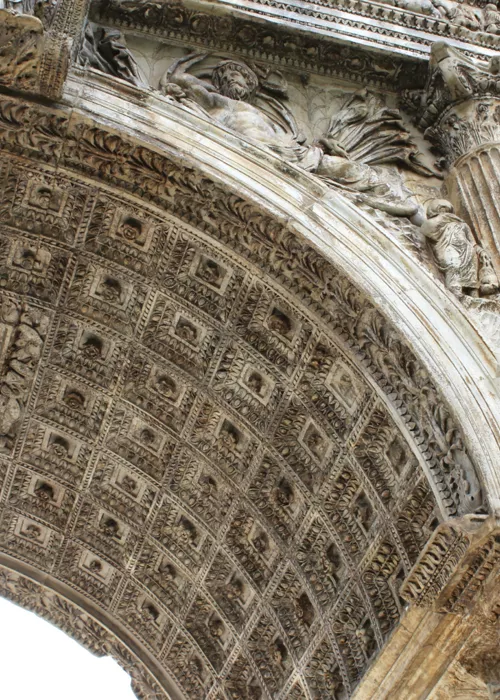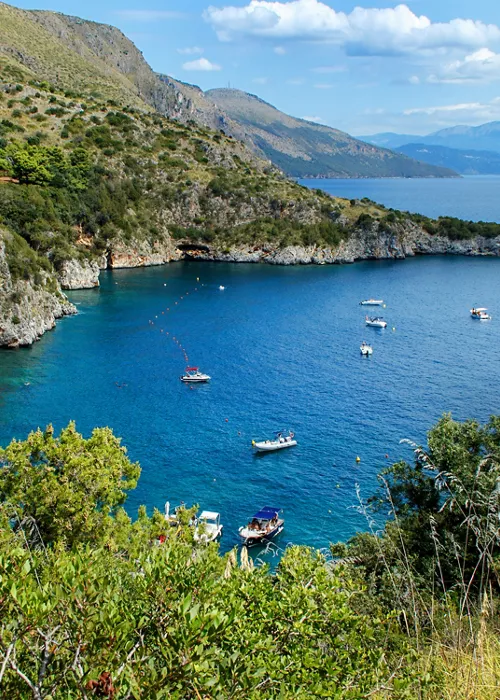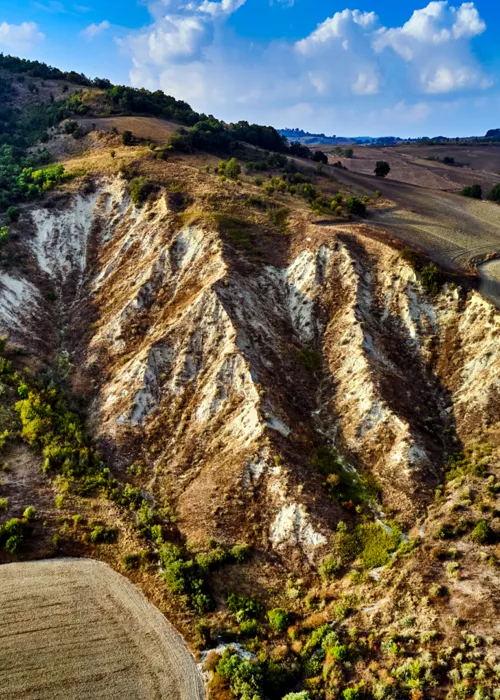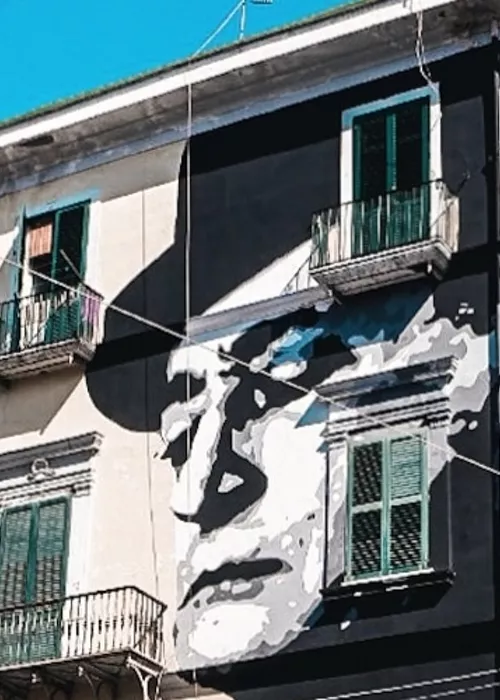Baia

"Nullus in orbe sinus Baiis prælucet amœnis," the Latin poet Horace wrote. "There is nothing in the world more beautiful than the Gulf of Baia". For the ancient Roman aristocracy, it was a sea of luxurious holidays (so much so that the moralist Seneca condemned its profligacy). There were refined residences on gentle slopes overlooking the Tyrrhenian Sea, large pools fed by natural thermal waters and, last but not least, the security of a powerful military port on Cape Misenum just beyond the headland.
At first glance, Baia may appear to be just a pleasant little port, which you can reach by public transport all the way from Naples. Almost immediately, however, the past is revealed by the impressive archaeological remains you encounter when walking around and the invitations for guided tours, in diving suits or by boat, to the splendid underwater remains of Roman civilisation protected by the Underwater Archaeological Park.
Mythical ruins can still be visited even without flippers and a snorkel. Absolutely not to be missed is the Archaeological Park of the Thermal Baths with its buildings on the ancient hillside terraces, or, high up on the headland, the spectacular Castle, home to the Campi Flegrei Archaeological Museum, which offers a truly remarkable panorama.
We must not forget, however, that Baia is part of Bàcoli which, with its beaches, the comforts of modern spas and its Bourbon past, is able to offer visitors moments of true relaxation.
Take the time to visit the Mirabilis Pool, an ancient Roman cistern, the second largest ever built after that of Istanbul, to supply drinking water for the military ships in the nearby port of Miseno. You cannot leave these places without also seeing the Vanvitelliana Lodge, which Ferdinand IV of Bourbon had built, in 1782 on an islet on Lake Fusaro.
Of course, it is also worth visiting the many restaurants serving traditional Neapolitan dishes, accompanied by the wide range of Campi Flegrei DOC wines.
Baia Underwater Park

The most attractive and unusual experience for those visiting Baia - or swimming in its waters - is related to the sinking of the ancient Roman city over the centuries. Since the fourth century, the bradyseism of the Campi Flegrei area has caused archaeological remains of exceptional value to be gradually submerged by the sea. A large strip of the ancient coastline is now, in fact, under the water, but you can still imagine it in continuity with the buildings and terraces in the Terme di Baia Archaeological Park on dry land.
All you have to do is dive in wearing a mask to see mosaics, statues and remains of walls from ancient Rome appear among fish, marine flora and under a thin layer of sand. Glass-bottom boats give everyone the chance to admire the underwater park.
As early as the Republican era, the inlet, narrower than it is today, was occupied by villas overlooking the sea. One of the main submerged buildings visible, at a depth of seven metres, on the seabed in front of Punta Epitaffio, is a nymphaeum from the Claudian period, near which the remains of a villa attributed to the Pisoni family are revealed.
Other villas and baths stood around the lacus baianus (Baia Inlet), which is now underwater. These include the so-called "villa with protruding porch", one of the most visited by divers, with remarkable mosaic floors.
Terme di Baia Archaeological Park

Everywhere, from time immemorial, even the most impressive remains of distant epochs have gradually been swallowed up by the passing years, the growth of vegetation and everyday use. When the first archaeological excavations were conducted in Baia, about a century ago, they focused on the area between three large domes that were still visible in cultivated fields around the small fishing village by the sea.
The domes were what are now traditionally referred to as the Temple of Diana, the Temple of Venus, hard to miss because they are outside the archaeological park, and the Temple of Mercury, which is within the park. One of the rooms in the latter featured the first known case in the history of architecture of a large concrete domed roof. Dated to the era of Augustus, the room shows a remarkable inclination towards experimentation in construction, evidently developed here thanks to the easy availability of pozzolanic ash.
As you go up or down the terraces in the park, you encounter and explore other similar building complexes, all related to thermal bath purposes. It's a kind of open-air museum leading down to the beach.
Phlegraean Fields Archaeological Museum

The museum is arranged in the spectacular Castle at the top of the headland overlooking the Gulf of Baia. Within its walls are the remains of a grandiose Roman villa, dating from between the second and first centuries BC, which rose almost a hundred metres from the sea to the summit: ancient floors in decorated opus signinum and mosaic remain in the fortress keep, now the museum's Knight's Pavilion. This, however, is just one of the numerous cultural assets included in the Phlegraean Fields Archaeological Park.
The exhibition route through the various sections allows visitors to become familiar with the history and art of the major ancient towns of the Phlegraean Fields, including Cuma, Puteoli (today's Pozzuoli) and Liternum. The tour proceeds through various and distant parts of the castle up to the spectacular Piazza d'Armi, with splendid panoramic views of the entire Gulf of Naples.
Vanvitelliana Lodge

Aside from the marine and archaeological attractions of the itinerary, it is fitting to also pay homage to the Bourbon dynasty, who ruled southern Italy for a long time and took care of the Bàcoli area again at the end of the 18th century. The occasion was the rediscovery of Lake Fusaro. It was here in fact, only a twenty-minute walk from Baia, although on the opposite side of the Phlegrean peninsula - that Ferdinand IV of Bourbon ended the centuries-long neglect of the area, choosing the lake as his hunting and fishing reserve.
In the long dark centuries after the ancient splendours of the Roman era, Lake Fusaro had ended up reverting to the state of a coastal marsh, but the sovereign went so far as commissioning one of the greatest architects of the time, Carlo Vanvitelli, to build an isolated royal hunting lodge in the shallows. It was completed by 1782 and today it is widely known as the Vanvitelliana Lodge.
You get there along a small wooden bridge, as light as the architecture, in a landscape that has fairytale tones. The strip of land on the other side of the lake overlooks the Tyrrhenian Sea, with its beach facilities.
Piscina mirabilis

So "Admirable" in terms of its architectural grandeur that Giuliano da Sangallo, the leading Renaissance engineer, was struck by it, the pool is the final section of an aqueduct from the hinterland built by Augustus. The purpose was to ensure the supply of drinking water for the Roman military fleet stationed at Misenum.
It is an imposing and impressive cistern, 70-metre long and 15-metre high, partly excavated in tuff and partly built, in a perfect state of preservation. One of the two stepped entrances has now been replaced by an iron ramp to allow public access. With forty-eight pillars dividing the space into five naves, you feel like you are entering an underground cathedral.
The cistern had a capacity of over twelve thousand cubic metres. It is likely that its position high up on the headland was in order to make use of the natural slope in the canal system.
Lake Avernus

Those who have done classical studies, or are old enough to have learnt Latin in secondary school, might remember that Avernus is the underworld. The lake’s fame is partly mythological and partly volcanic: in ancient times it was believed that here, among the fumaroles of the Phlegraean Fields, just an hour’s walk from Baia, were the gates of Hades.
More specifically, the lake is actually the crater of a volcano, whose last eruption is no longer remembered, and preserves several Roman remains along its shores. You can walk around the entire perimeter along a pleasant flat path, to nearby Lake Lucrino, where, at the Stufe di Nerone, you can enjoy the thermal waters so popular with the ancient Romans.


